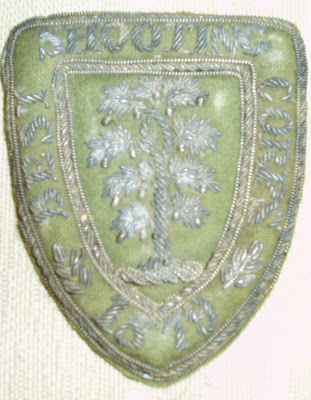Worcester Chronicle - April 25, 1891
Why did they do it? Everything suggests they were doing well in Worcester and there certainly wasn't any downturn at RWP. According to an April 25, 1891 account in the Worcester Chronicle, management claimed the prior three years were the most profitable in the company's 140 year history. In only 10 years employment at the works had grown from 570 to 800, a 40% increase! At the same time, however, the pottery business in Trenton was booming and, more importantly, U. S. pottery workers were making more than twice what Staffordshire workers earned and there had to be a similar differential for the Worcestershire potteries. An analysis of the cost of operating a six oven kiln in England and the United States shows American labor costs of over $61,000 compared to only $27,000 in England.
White Star Line Ad for Voyages to the U.S.
The cost differential was a problem for English pottery owners, but a tremendous opportunity for workers like James. American pottery companies were thriving despite the cost differentials because of high protective tariffs, import taxes equal to 45-60% of the value of the imports. According to the Chronicle "many Worcester people" had already made the move to Trenton, some of whom may have been known to the Winders, but even if their knowledge was limited to newspaper accounts, they were well aware of the possibility of earning more money. In addition to higher wages, there was also the possibility of reaching a better job within the trade. Listed as a mould maker on British census returns, James would be listed as the more prestigious modeler on U.S. census documents and Trenton directories. All the evidence indicates the Winders were not poor people for whom immigration may have been a survival issue. James R. had already achieved much out of very humble beginnings which probably gave him the confidence to achieve even more.
White Star Steerage Ticket
The first step in realizing their dreams was the big, if not huge, step of taking an ocean voyage of over 3000 miles for people who probably hadn't been 100 miles away from home in their married lives. Even if, as suspected, James had been in Ireland with his parents, 30 years earlier, that was a day trip compared to this one. As noted earlier, the Winders appear to have made the trip in two parts, first James and then Mary with the children. The latter voyage is well documented, the family sailed from Liverpool on the White Star line, the Majestic, and arrived in New York harbor on May 18, 1892. From there they proceeded to Ellis Island, but James trip to America is, however, a different story.
HMS Majestic
One of the mysteries of Winder family history is when and how James traveled to the United States. He clearly was not with Mary and the children and his December 1891 resignation from Royal Worcester argues for a departure shortly after that date. Mary worked at RWP until just before her voyage and it is unlikely the Winders could have afforded a long period of unemployment prior to the journey. No passenger list search to date has identified the ship, James sailed on. He could conceivably sailed to either New York or Philadelphia and it's not unreasonable to assume James also sailed on a White Star vessel, possibly the Majestic itself which made regular runs between Liverpool and New York City.
Steerage Menu on a White Star Ship
Whatever the facts of the situation, all of the Winders most likely traveled in steerage class which cost about $20 or about $510 in modern money. While the accommodations were far from plush, fortunately for the Winders their voyage was later than the far longer, unpleasant and dangerous trips of earlier in the century. The Majestic, for example, was a relatively new ship (launched on June 29, 1889) and had made the transatlantic crossing in less than six days earlier in 1891, setting a record in the process. So no matter how cramped the quarters, they only had to be endured for a week, a far cry form the 100 day crossings in sailing ships only 40-50 years earlier. The below deck scenes in the movie Titanic probably give a fairly accurate picture of the experience. Ironically the Majestic was brought out of retirement in 1912 to make up some of the capacity lost in the Titanic disaster. In any event neither the price nor the experience could have been too bad since Mary and daughters, Elsie and Florence made a return trip in 1895 for what was described as a "sojourn of several weeks."
















